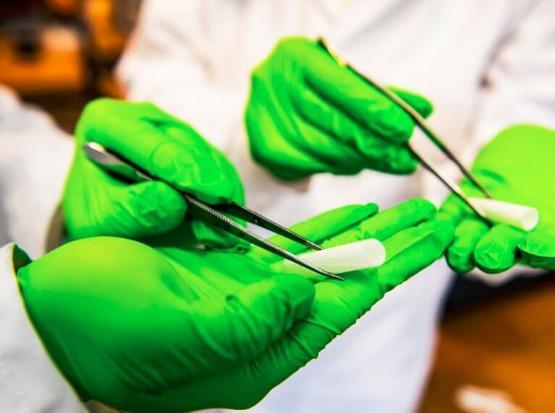Scientist behind artificial blood vessel says 'off-the-shelf' organs are the future

Medics will be able to choose from a “supermarket shelf” of artificial human tissue and organs within the next 40 years, according to a leading academic.
Dr Farshid Sefat, Associate Professor and Programme Leader in Biomedical and Electronic Engineering at the University of Bradford, is currently working on creating artificial blood vessels. He believes manufactured organs could be key to the future of healthcare.
He said: “One of the targets is to have off-the-shelf products for the human body. We go to Asda or Sainsbury’s and take items off the shelf. We could be doing the same in a hospital with organs.
“If someone needs an organ, there would be a medical engineering room where you could say, ‘Okay, here you go, here’s a replacement kidney. Here’s a heart. You want a blood vessel? What size do you need?’
“It’s just like going to a mechanic for your car. When something goes wrong, you can order a part to replace it. I believe this is the future of medicine and we will see it in 20 to 40 years.”
'Temporary scaffolding'
Dr Sefat, a former radiographer, works with colleagues at the University of Bradford’s Polymer Interdisciplinary Research Centre (IRC), one of the biggest Polymer centres in Europe, to create artificial organs. He has devised a replica blood vessel, which is now being tested in the lab.
He said: “We can make everything from very tiny blood vessels to the big ones that connect to the heart. The main objective as a biomaterial is to use it like you would use scaffolding around a building, to allow repairs to be carried out.
“The biomaterial blood vessel would be used as a temporary link in the patient’s body that would remain for around six months, allowing the patient’s cells to attach and build their own blood vessel. The biomaterial is then absorbed by the human body. It’s really quite amazing.”
Dr Sefat, who previously worked on creating artificial skin in New York, USA, and was part of a team, along with the University of Sheffield, devising artificial corneas, has been focusing on blood vessels for five years. He has created two layers out of three that form a blood vessel and is currently working on the third, outer layer.

Pictured above: Dr Sefat's artificial blood vessels
He believes his artificial blood vessels could be available for use in patients in the next 10 years. Describing the process, Dr Sefat said: “We make a solution of polymers which is converted to a nanofibre by way of an electrospinning device. This material is similar to a spider’s web.
“For blood vessels, we have a rotating drum and the fibres spin round and round to make a tube. The inner two layers are the most difficult to create and we have succeeded in making those. Now I’m working on the outer, protective layer, but this will be the easiest one to make.”
He said one of the advantages of artificial organs is there is no risk of rejection when implanted in a patient because the aim is to incorporate the patients’ own cells. Dr Sefat said: “There is no need for a match because we are using biomaterials, which are accepted by the human body.
“We can also incorporate the patient’s own cells into the organ. We can isolate cells from the patient, make millions of these cells in the lab and then implant them into a biomaterial kidney. Once the cells have populated the kidney, the surgeon can implant the organ.
"Artificial kidneys have already been created. It is a relatively simple organ as it has one function, to filter the blood. A liver is a very complicated organ with many functions, so that might take many years to make.
“Look at how far we’ve come with technology in the last 30 years. In medicine, our use of technology has sky-rocketed.
"I believe using biomaterials is the next step. It will reduce surgery waiting lists and save lives."
